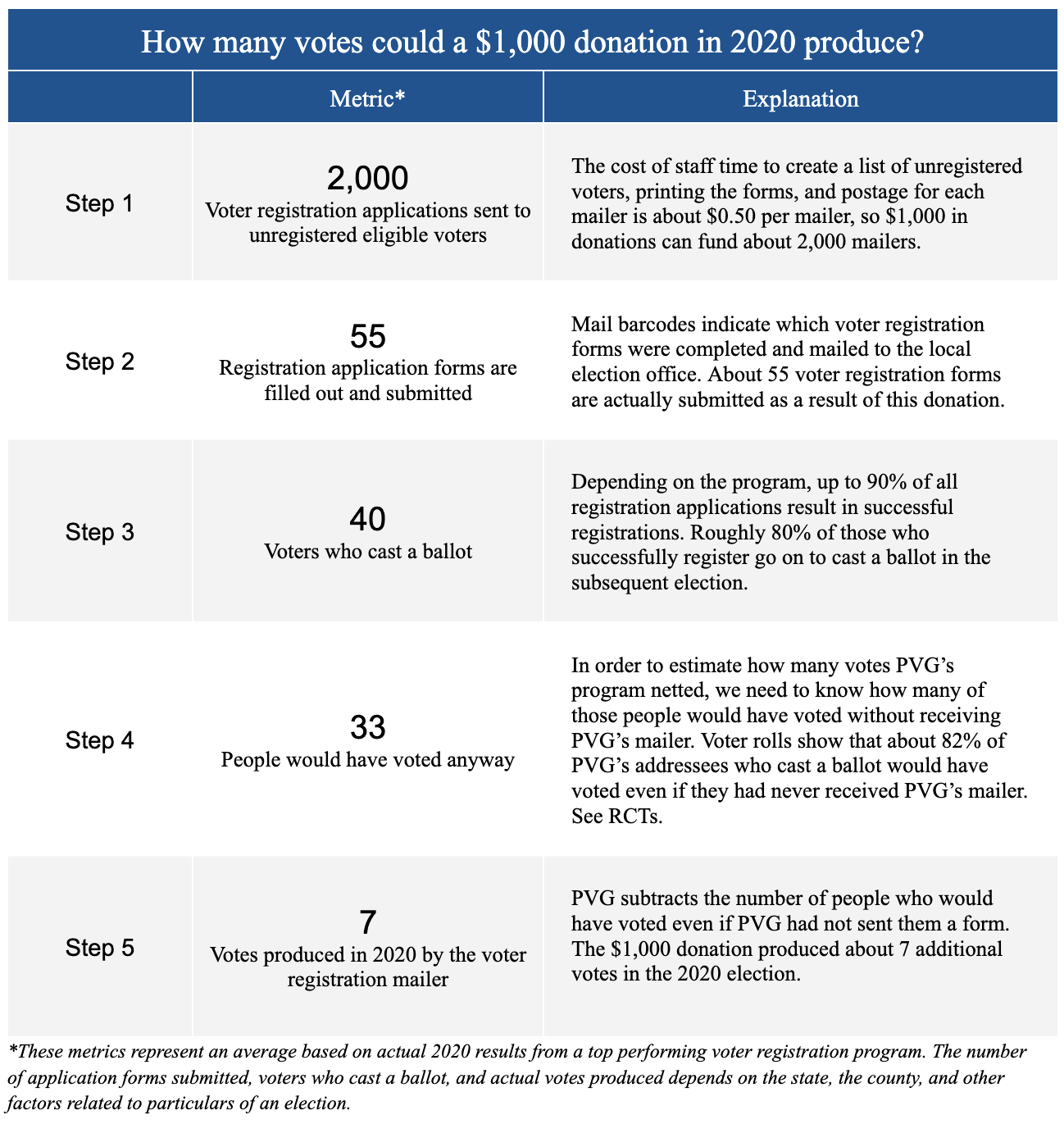How We Calculate the Cost of a Vote
Our recommended programs produce outcomes that help register voters and encourage them to cast a ballot. These programs are the most cost-effective we have found at producing a net vote or net Democratic vote.
Because the initial outputs of these programs are so inexpensive (for example, it costs about $0.50 to send a pre-filled voter registration application in the mail), some people are surprised at how expensive it is to produce a net vote (between $100 and $300 depending on the voter registration mailer program in 2020).
Below is an example of the number of votes $1,000 could produce by funding a voter registration mailing through the fictional Pretend Voter Group (PVG) in 2020. We estimate a $1,000 donation successfully registered about 50 voters and produced 7 votes in the 2020 presidential election, or about $142 per net vote. This cost is even greater to produce a net Democratic vote. We expect the cost to produce a vote to vary over time given inflation, the saliency of an election (e.g. tactics deployed in Presidential elections are more expensive), and as tactics are widely adopted they become less effective.
Additional Benefits
That $1,000 donation may have also accomplished some additional outcomes that are not explicitly incorporated into the above cost-effectiveness outline.
For example, research shows that voting is a “sticky” behavior: a high percentage of newly registered voters who vote in one election will also vote in subsequent elections.
For other programs, the cost-per-net-vote assessment does not account for benefits such as an organization's newly acquired knowledge that can improve future programs, developing relationships with voters, and recruiting large numbers of volunteers who can continue to be engaged in future cycles.

